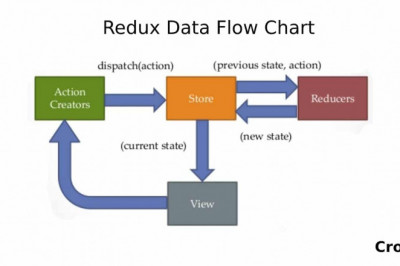views

Choosing between offset printing and digital technology for publishing and selling books for a global audience could be a hard call, particularly if you are new to the industry. Offset printing is the traditional book-publishing method that has been around for centuries now. Despite being an ageing process, it is commonly chosen by publishing houses over digital technology for its practical commercial purposes.
But is it still ahead in the race? Let’s find out.
How does Offset Printing Works?
In the offset printing process, ink is applied on metal plates, then transferred to a rubber rolling sheet to print them on paper. The papers are then trimmed and bounded based on the author’s requirement.
The metal plates are customized for each book, and therefore, quantity plays an important factor in offset printing. The more books you print, the lesser will be the cost of investment.
When Offset Printing is a Good Option?
Confident authors who know that their books will be sold in thousands the moment they hit the stand mainly benefit from the traditional book publishing method.
The critical advantage of offset printers is the quantity they can produce at a low cost. You can print a large number of books inexpensively when compared to digital printing. However, the minimum amount itself is often so enormous that new authors find it hard to afford.
Offset printing provides different options in ink, paper, and book finish for your project. For instance, if you are looking for metallic ink, a transparent sheet, and a custom book size, the traditional process offers the required flexibility.
Offset printers can easily manage a variety of larger sizes instead of digital printers that run on set sizes.
Finally, the rubber role ensures perfect colour coordination and accurate image quality, making it ideal for printing logos and brand colours.
Why Digital Printing is Slowly Making Space
The high cost of traditional book-publishing and printing makes it impossible for new writers to pursue their dreams.
Here’s where the Print on Demand method brings us a sustainable solution. PoD is a boon for self-published authors as it reduces the printing cost by 85% and eliminates large print runs and inventory issues.
In Writat’s PoD publishing process, manuscripts are uploaded on the dashboard in a PDF digital format and are printed directly on paper – it is exactly like how you press ‘Ctrl + ‘P’ on your keyboard to print documents from your computer. No metal plates, no customization, and no additional setup, binding and paper cost.
This allows new writers to self-publish and sell their books to a global audience without worrying about large print runs and inventory costs. Instead, you print and sell books digitally when readers place orders online.
The Disadvantages of Offset Printers
- Offset printing is a tedious process that requires printing metal plates and setting up the printing unit.
- Demands a significant upfront investment from the authors. This is why many book-publishing houses reject manuscripts of new writers despite the stories’ brilliance.
- free publishing websites
- Not suitable for last-minute projects as offset printing requires additional setup time.
- Not apt for authors who need a small print run like about 25 copies or are not sure how many they will need. The lucrative print run size for offset printers is 1000 copies and above.
- The trim size, paper, and binding cost varies from printer to printer, which can depend upon other factors as well, like country, book genre, language, and book type.
- self publishing in india
- free publishing websites
- Another problem with offset printing is that you will not be able to do anything about an error found in the book, like a typo, an inconsistency, or a factual error. You will probably lose a lot of money if you decide to order another batch or release a new edition.












